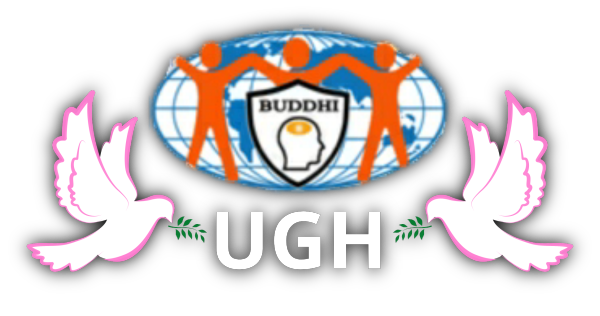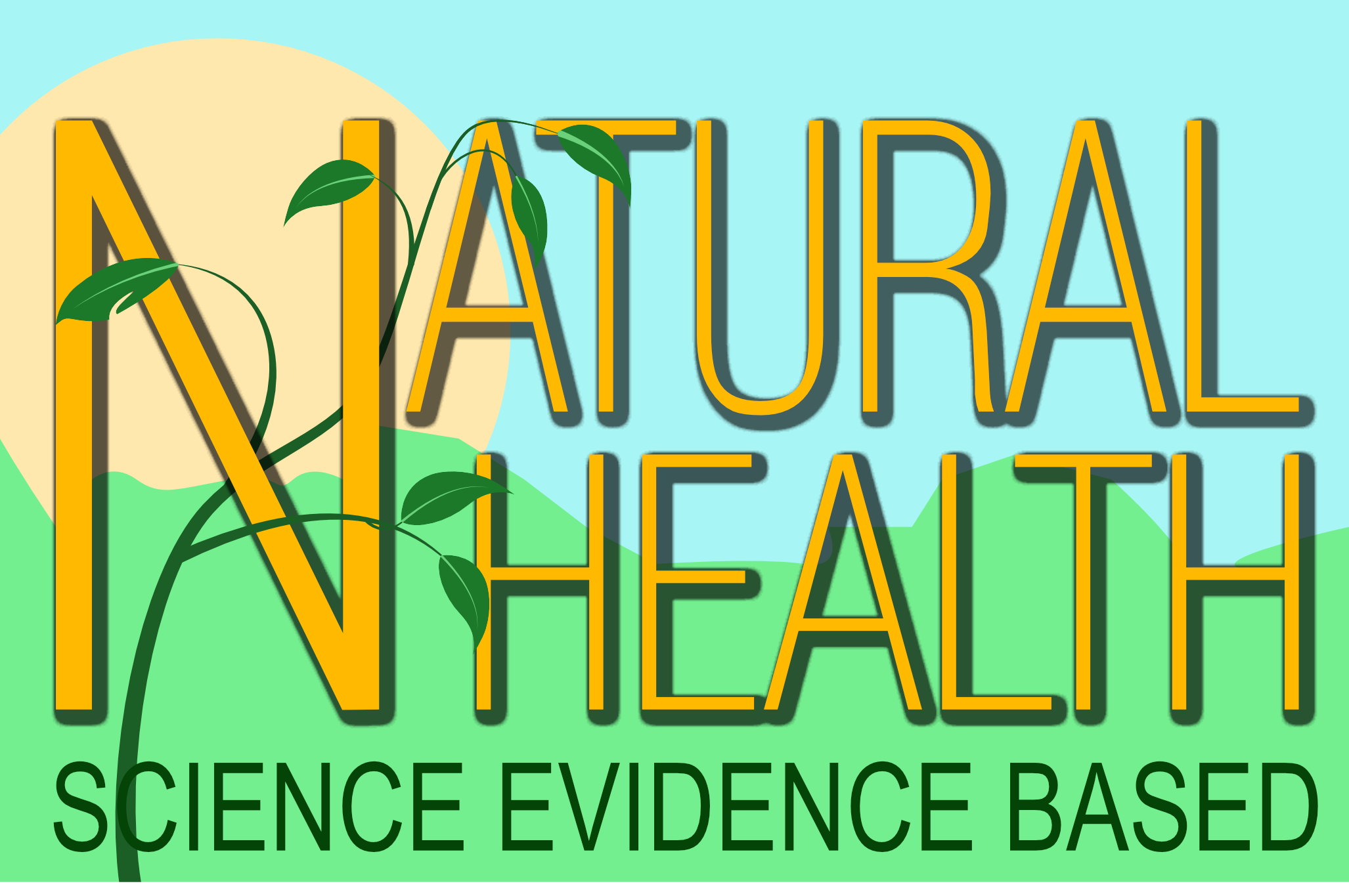Bad Science, a trust issue?
UGH article, 2020
Compiled by: D. Dashwood

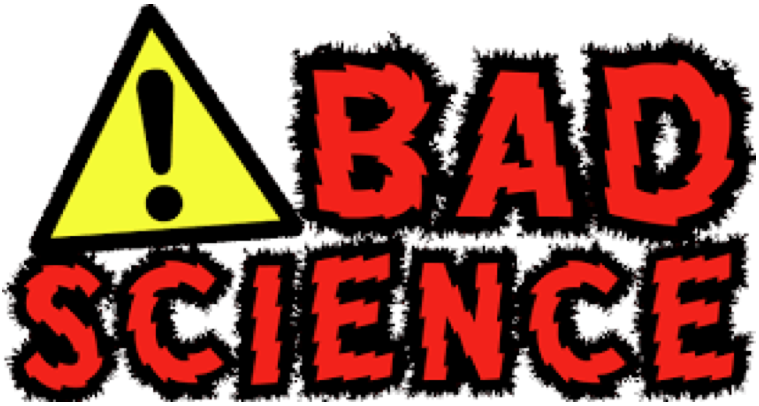
Article:
Covid-19 has brought a rush of scientific research to find a cure, but can we trust science and the scientists?
Is Science Bad?
Well, there is much available proof to show that it is not, and it is all around us. Evidence shows that it is people that determine the perceptual outcome of science. This articl will explain the reasoning.
To be, or not to be, that is the question ...
One huge problem for the vast majority of people in the world today, is that it is very difficult to know what is real and what is fake. This is compounded for us by the vast amounts of information freely accessible on the internet, much of which is not only false but dangerously false; however there is also much information that is 'like the real thing' but isn't, and this is being compounded by the phenominally fast rise of artificial intelligence (AI) - just like some mimicking fauna in nature, or man-made objects.
Have a look at the image below and answer this question: "Is she real or is she fake?"

A simple search of the internet will give you the answer. If not the answer is here.
"Take it with a pinch of salt ... "
Science tells us that some things are either good or bad for humans, and to many other life forms and ecology. For example
Salt, a mineral composed primarily of sodium chloride (NaCl), is beneficial to life
generally, but only in such quantity as is required.
Science research has found that excess salt, such as in the modern human diet can be harmful so is considered bad as well. Without Science we
probably wouldn't know the real reasons why something is good or bad, such is the case with salt
So why is it that food manufacturers often put excessive amounts of salt in their products?
Because salt is delicious and, like sugars and fats, often irrisistable to humans. The more salt a person eats in bland foods like pasta for example, the more they want. Science tells us salt is a food preservative that is good for inhibiting the growth of unwanted organisms. However, salt is rarely, if ever, used solely for food preservation today.
So, the reason that there is so much salt in manufactured food is down to human intervention, generally the desire of food manufacturers to exploit for profit the human craving for salt, and not Science
OK, what about Radioactivity?
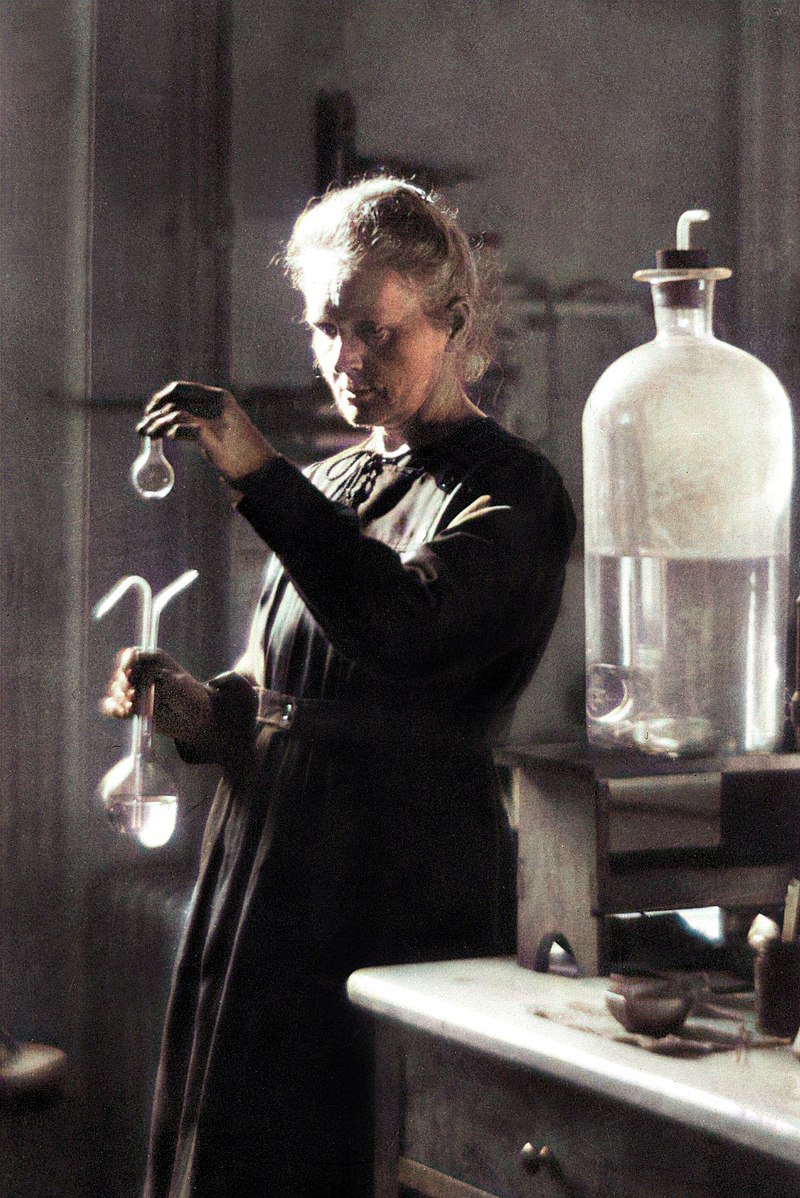
Marie Curie
We are all constantly subject to the receipt of radiatiion. There is, and always has been (so science tells us), a level of 'background' radiation on Earth. However, Science enabled the discovery of 'radiation', explaining that it is the process by which 'things' e.g. waves, move out from the centre, i.e. light waves 'radiate' from the Sun, mobile phones 'radiate' signals, microwave ovens 'radiate' microwaves that can cook food.
Radioactivity, a term coined by Marie Curie, is the process by which atomic particles are given off when a nucleus decays. Some of the results of these processes are less harmful than others.
It was humans using Science who discovered the radioactive properties of certain materials that are used in medicine, for example X-rays, or for use as a fuel for the generation of electricity.
And yet it was humans and not Science that found a darker use for 'radioactivity' in the form of the Atomic Bomb.
Clearly, most scientists, and their scientific research findings, are honest; but it is a fact of life that if you get, say, 40 people from varying backgrounds and ask them a question that has no difinitive answer, then you will most likely get 40 different answers. Research studies often go the same way.
That said, the honest scientists are not the ones that we generally have to worry about. It is the disonest corrupt few who are either negligent - intentionally or unintentionally - in their scientific methods, show and practice bias in the search for answers, hype up the results of a study, or flat-out produce fraudulent results that we need to identify.
So how can we know if research scientists and their research results are honest or not?
'The case against science is straightforward:
much of the scientific literature, perhaps half, may simply be untrue.'
Says The Lancet editor, Richard Horton
"And medicine seems comfortable allowing quacks and charlatans to prosper. Insane indeed."
Dariush Mozaffarian… The Lancet DOI: http://dx.doi.org/10.1016/S0140-6736(16)30300-2
To be quite bluntly honest we ordinary people will not know - until, that is, something goes spectacularly wrong; we rely on other scientists to peer review research findings to judge the veracity and authenticity of the research.
The case against science is straightforward:
much of the scientific literature, perhaps half, may simply be untrue
This again is a problematic area for the ordinary non-scientific person. Let us take, for example, the ongoing back-and-forth argument over the use of Hydroxychloroquine for treatment in the early stages of Covid-19 infection.
Assessed data of early cases of the novel coronavirus noted a similarity in symptoms of covid-19 and SARS. A 2005 study [1] had identified Chloroquine (CQ) as an ihibitor of SARS infection and spread, so it was a natural progression to research its use in treating Covid-19.
The World Health Organisation (WHO) backed several research studies into the use of Hydroxychloroquine (HCQ), a derivative of CQ that has fewer side effects.
The Lancet published an article that stated HCQ was associated with decreased in-hospital survival and an increased frequency of ventricular arrhythmias when used for treatment of COVID-19. The WHO put further research into the use of covid-19 on hold citing safety concerns.
While trained scientists can easily dismiss the bogus work found in predatory journals, it is not as easy for non-experts to separate real discoveries from fabricated findings
However, the article was later retracted by The Lancet after the data cited in the research - based on data from a company called Surgisphere - was found to be 'implausable' and because the veracity of the data underlying this observational study could not be assured by the study authors.
in July 2020 the WHO abruptly halted trials of HCQ citing evidence and recommendations from the WHO Solidarity Trial’s International Steering Committee that stated HCQ had little or no impact on the reduction of mortality of hospitalised patients with covid-19 when compared to standard care.
If research as important as the one for a cure for a pandemic of the proportions of covid-19 are found to be less than honest, then why should we trust scientists?
An obvious problem for the non-scientific part of the population is that we non-scientific people rely on the honest unbiased reporting of research. Many of the reports we get are taken from the published works in highly respected scientific journals such as The Lancet that practice high levels of integrity in their publishing. There are also those with lesser standards that are more predatory in their efforts to get research articles to publish.
While trained scientists can easily dismiss the bogus work often found in predatory journals, it is not as easy for non-experts to separate real discoveries from fabricated findings.
The good ...
Over many decades past there have been many cases of scientists who have published the results of 'groundbreaking'. Research, that has often lead to dramatic changes in peoples lifestyle, behaviour, or thinking. Some of these have had profound benefits, such as the discovery of penicillin.
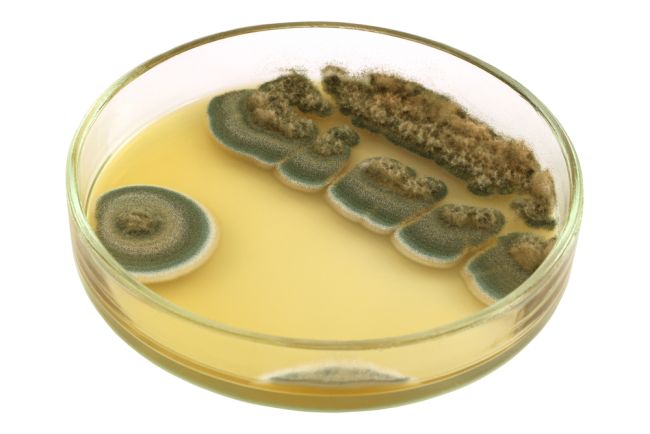
Penicillium mold growing in a petri dish. (Image credit: Satirus/Shutterstock?)
... the not so good ...
At the University of Utah in 1989, chemists Stanley Pons and Martin Fleischmann a announced that the world's energy problems had been solved. They claimed to have created nuclear fusion on a tabletop by electrolyzing deuterium oxide — heavy water — using electrodes made of palladium and platinum.
Deuterium is a naturally occurring stable isotope of hydrogen; its nucleus contains a neutron in addition to the single proton found in the nucleus of ordinary hydrogen. According to the chemists, the deuterium nuclei were squeezed so closely together in the palladium cathode that they fused, releasing energy.
As Robert Park, professor of physics at the University of Maryland and author of Voodoo Science puts it, "Basically if what Fleischmann and Pons said was true, they had duplicated the source of the sun's energy in a test tube."
The problem is, no other scientists have been able to reproduce their results — and not for lack of trying. "There's always some guy willing to say, 'OK, we found something that works, but it only works once in a while,' or 'We're not going to show it to you, because we're worried you'll steal our patent rights'," says Marc Abrahams, editor of Annals of Improbable Research.
Since 1989 many other researchers have devoted much time (and money) into researching nuclear fusion. There have been some more remarkable claims for success, but there is still no useable breakthrough for this research.
... and the bad.
Yet others have had disasterous consequences, for example Thalidomide, a drug prescribed to pregnant women for 'morning sickness' that was eventually linked to horrific malformed children thanks to the efforts of William McBride, an Australian obstetrician.
in 1982, McBride published a report about a morning-sickness drug called Debendox that, he claimed, clearly caused birth defects in rabbits. Merrell Dow took the drug off the market amid an avalanche of lawsuits.
But there was a problem. McBride had altered data in research carried out by assistants. The results showed Debendox had no ill effects. After years of investigation, McBride was found guilty of scientific fraud in 1993 by a medical tribunal.
Bad science in other areas
The issue of public trust in scientific research doesn't stop with medicine. We'll take a look at some other areas where research is often found to be wanting.
In recent years the number of published scientific research papers that have been later retracted, and the authors of the papers sanctioned and or discredited have increased dramatically. The reasons are not immediately obvious but it may be because of greater scrutiny of the research, by the scientific community themselves, together with greater in-depth scrutiny by outside parties - whose aim is to hold science and the scientific community to account, whistleblowers, and better editorial oversight.
Alternative and Complementary Medicine

What is 'alternative medicine'?
'Alternative' medicine and 'Complementary' medicine are often taken to mean the same thing but they are in reality different.

Chinese acupuncture chart
Complementary medicine is often used together with mainstream therapies, whereas Alternative medicine is used for medical treatments instead of accepted mainstream therapies.
Examples of alternative medicine are Acupuncture, Chinese or Oriental medicine, and Homeopathy. Some Complementary and Alternative Medicine (CAM) overlap areas of mainstream medicine; for example acupuncture or homeopathy is used as mainstream therapy in some counties alongside western science-based medicine.
So why does Science-based medicine have a problem with Complementary and Alternative medicine?
The main area of concern with CAM is that it often allows unregulated practitioners to provide 'medical' treatments with unregulated and often unproven 'medicines'.
However even recognised Doctors and medical experts can be a cause for concern. Some of the most prominent players in the game of celebrity
doctoring are integrative medicine expert Andrew Weil,
cardiothoracic surgeon turned daytime television health guru Mehmet Oz
, and U.S. television’s go-to-psychologist, Phil McGraw.
All of these men have come under the critical examination microscope, usually due to questions regarding the medical safety and efficacy of their
recommendations.
Many so-called health experts are lurking in the realms of complementary and alternative medicine (CAM), many of whom have become very, very
well known through books, social media and television. One well known UK health expert was
'Dr' Gillian McKeith, or to give her medical title: Gillian
McKeith; she presented her often controversial ideas on 'wellness' through her TV appearences and web site. She was ultimately exposed as a
sham doctor when her credentials were found to have been obtained via distance-learning programmes from a non-accredited learning institution
(now closed) in Alabama, U.S.A..
This minor irritation in her life didn't stop her and she continued to expound her ideas, and grow richer, but agreed to stop calling herself a
doctor.
So, carrying on with the theme of things that are not always what they make temselves out to be ...
It's all down to a lack of vitamin ....
When the reality dawned on the world that Covid-19 had no immediate science based cure or preventative vaccine, many many people turned, as is the norm, to alternative ways of warding off the the virus or its effects if contracted.
Again, as is the norm in cases where fear, doubt, uncertainty and misinformation, sometimes even self-interest or vanity come to the fore within a person, community, population and Nation, up rise the scammers, cheats, and self-professed experts. They tell you that they have the ultimate and absolutely certain answer for your problem.
So it will come as no surprise when you find that this is exactly the case with the covid-19 pandemic.
There is no deniying - even though some do - that covid-19 is a nasty virus with nasty outcomes, so it is natural that people will try to
prevent themselves getting the virus in the first place.
Because a viable effective vaccine is still (October 2020) a long way off, the supplement and vitamin pedlars and scammers are having a jolly
good time ... at your expense ... by promoting Vitamin D as
a cure for covid-19.
At United Global Human we have long regailed against those who pedal 'vitamin supplement' pills and potions. Many of these are hailed as dietary supplements, classified as food, and, in the U.S. for example, have little or no regulatory oversight; the EU and the UK fare better with specific regulations concerned with the manufacture and sale of food supplements.
Homeopathy
Homeopathy is a "treatment" based on the use of highly diluted substances (given mainly in tablet form) with the aim of triggering the body’s own healing mechanisms, that practitioners claim can cause the body to heal itself.
Homeopathy practitioners worldwide regularly cite well-known personalities -and even members of the Monarchy in some countries, as users of homeopathic remedies and treatments.
Homeopathy is viewed in the western world as a complementary or alternative medicine (CAM). This means that homeopathy is differentiated from treatments that are a conventional part of Western medicine in important ways. In some European countries homeopathy is banned or have called for it to be banned completely but it still persists.
How did Homeopathy originate?
It's based on a series of ideas developed in the 1790s by a German doctor called Samuel Hahnemann.
A central principle of any "treatment" is that "like cures like" – that a substance that causes certain symptoms can also help to remove those symptoms.
A second central principle is based around a process of dilution and shaking called succussion.
Homeopathic practitioners believe that the more a substance is diluted in this way, the greater its power to treat symptoms.
Homeopathy is used to "treat" an extremely wide range of conditions, including physical conditions such as asthma and psychological conditions such as depression.
Does it work?
There's been extensive investigation of the effectiveness of homeopathy. There's no good-quality evidence that homeopathy is effective as a treatment for any health condition.
There is no good quality evidence that homeopathy is effective as a treatment for any health condition.
A 2010 UK House of Commons, Parliament Science and Technology Committee, report on homeopathy said that homeopathic remedies perform no better than placebos (dummy treatments).
The following is taken verbatim from the CHE (Center for Homeopathic Education) website:
"The wonderful truth about homeopathy is that it absolutely just cannot harm you! There are very few ingredients in it – and they are entirely natural and non-toxic. The remedy works on a like-cures-like basis and whatever it is made from has been heavily diluted, often until there is nothing of the substance left in it at all!"
Well, perhaps I am being a little disingenuous here, but if there is 'nothing of the substance left in it at all', isn't it a bit pointless taking it in the first place? Perhaps we should call it a placebo.
The review also said that the principles on which homeopathy is based are "scientifically implausible".
So, another problem that rears its head here is that any 'research' findings extolling the effecacy, health benefits, and other virtues, are liable to become the subject of some really dubious grey areas of popular myth.
The real problem with Complementary and Alternative Medicine is, no matter how well-intentioned its honesty and that of its devoted exponents, there is much about it that surely places it into the realm of pseudoscience.
It can often be very difficult for the lay person to distinguish between science fact about therapies, ingredients and use, and pure fantasy and wishful longing for efficacy, especially in countries where falling sick is financially a huge burden, or where medical infrastructure is very poorly funded. In these instances it is no wonder that people turn to CAM for their health solutions.
So how can we spot pseudoscience?
Here are a few ways that may help you spot when pseudoscience and psychobabble is being used:
- The use of words that sound like professional scientific terms but are used incorrectly or used to mislead.
- A high reliance on anecdotal evidence
- Extraordinary claims without extraordinary evidence to back the claims
- Claims that cannot be scientifically proven
- Claims that counter proven scientific fact
- Absence of adequate peer review
- Claims that are repeated despite being scientifically refuted
What's the harm in using Alternative Medicine?
There are many people worldwide who, for their own resaons, seek cures using alternative medicine. Indeed, the internet and book shops are crammed full of material relating to the benefits of alternative medicine. On the other side of the coin there is also a miriad of evidence pointing out the oposite point of view.
So who is right?
Well, dear readers, as you have read this article to this point it is fairly evident that you have a healthy dose of skepticism and want to know more. So, just as an Antithesis to all the psychobabble from the AM supporters clubs, read some stories gathered from real world cases by whatstheharm.net and decide for yourself.
Bullshit baffles brains: the role of advertising in promoting 'science'
Should the cosmetics industry, and their $300 billion a year profits, be labelled 'bad science' as some critics suggest? The big multinational companies are highly regulated with their products constantly monitored for misleading scientific claims. They are, however, masters at advertising and, unfortunately for many, are experts in the use of pseudoscientific psychobabble.
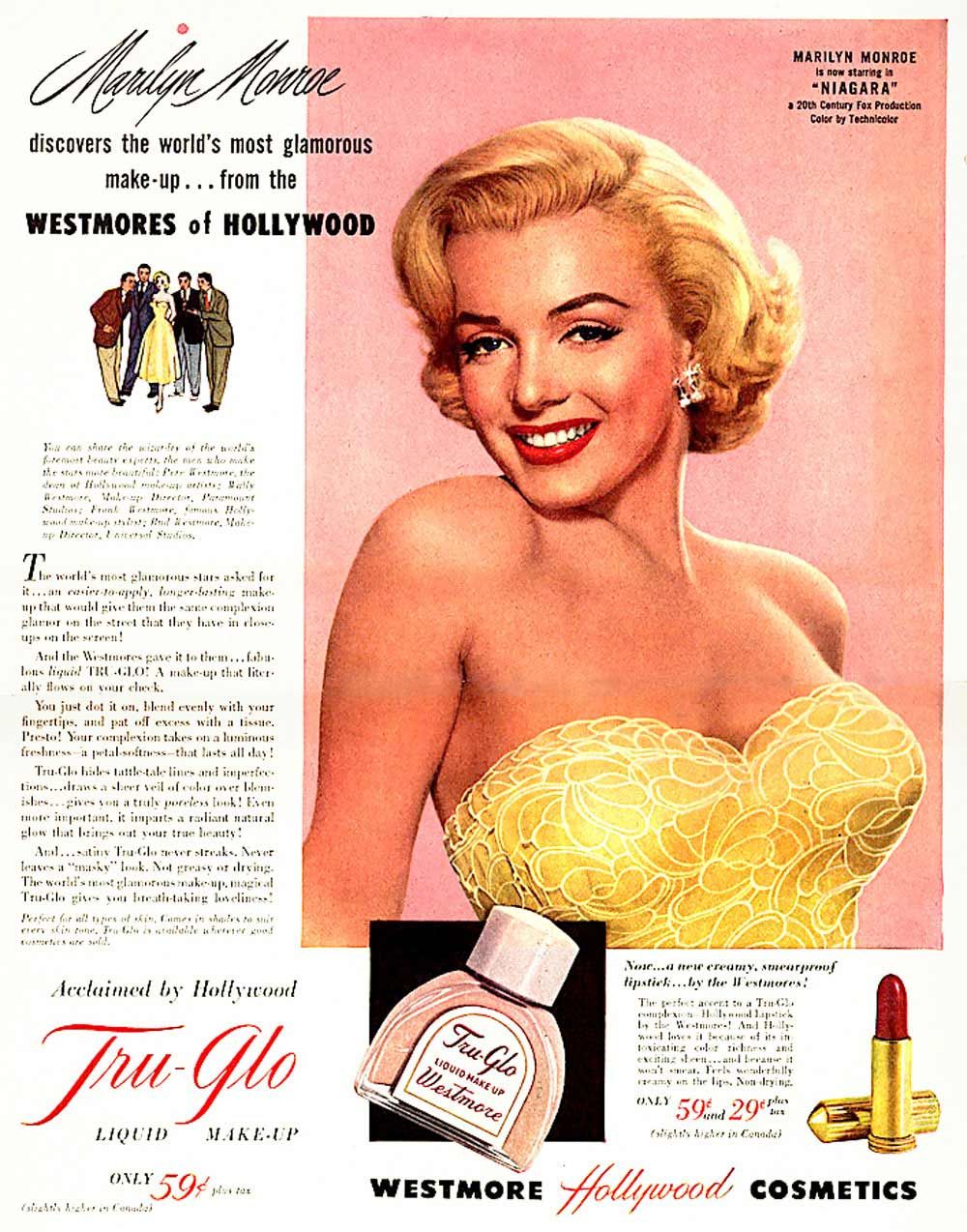
Personalities used as advertising lures
Ben Goldacre in his book Bad Science
this is a tightly regulated industry, with big money to be made from nonsense
"I have great respect for manufacturers of cosmetics. They are at the other end of the spectrum from the detox industry: this is a tightly regulated industry, with big money to be made from nonsense, and so we find large, well organised teams from international biotech firms generating elegant, distracting, suggestive, but utterly defensible psuedoscience."
What is amazing is the sheer number of different chemicals found in beauty products. All things can be described in tems of chemical composition,
but what disturbs their critics is that many are described using common names, chemical composition names, or are given fancy
sounding names that mask their true base.
Take for example Polymethylsilsesquioxane, this is a synthetic product formed with Methyltrichlorosilane and *methanol
that are used to form methyltrimethoxysilane which is then polymerized by hydrolysis and condensation to form polymethylsilsesquioxane
* Methanol is a nondrinking type of alcohol (also known as wood alcohol and methyl alcohol) which is mostly used to create fuel, solvents and antifreeze. A colorless liquid, it is volatile, flammable, and unlike ethanol, poisonous for human consumption.
Still following along so far?
Reduces the appearance of wrinkles
The use of attention grabbing is used in all forms of media, teaching and learning, storytelling, product sales, politics, and much more.
Headlines are designed to grab the reader's attention in order for them to see what the following information is about. Problems arise however, when the headlines don't actually match up to the information they refer too.
In relation to advertising of products, including health and beauty, sometimes the makers of the products make claims for them that they know will appeal to the potential purchasers but that cannot be substantiated or are potentially misleading. This can include, for example, pseudo- scientific naming of products or ingredients, fanciful headlines that have no real meaning, and image manipulation for the proposed benefits of its use
Most 'anti-aging' products make this claim and it may be very likely true. However, the message inferred from this claim is different than the words that are written and marketeers know this.
Why it is misleading – Because while the product is only 'reducing' the 'appearance' of wrinkles, consumers read and often believe that the product will somehow get rid of wrinkles. The bad news is that it won’t. Almost no cosmetic skin cream is going to get rid of wrinkles. They might make wrinkles look less obvious but this isn’t what consumers think when they read a claim like that.
And yet it seems that people are still not put off buying beauty products. In 2024, the value of the global cosmetics market was 646.2 billion U.S. dollars.
To get more in-depth, look at one widely available and well-known product chosen at random and examine its ingredients list.
Proctor & Gamble's Olay Brand Regenerist face cream. But, before I go on, let me say I am not, in any way, accusing P & G of any bad science, far from it; in fact P&G, like many other large manufacturers, spend a large amount of their not inconsiderable profits on 'science research' - for their own products, naturally.
Procter & Gamble’s profit for the fiscal year 2024 was more than U.S.$15 billion, with an operating profit for the fiscal year of $18.55 billion.
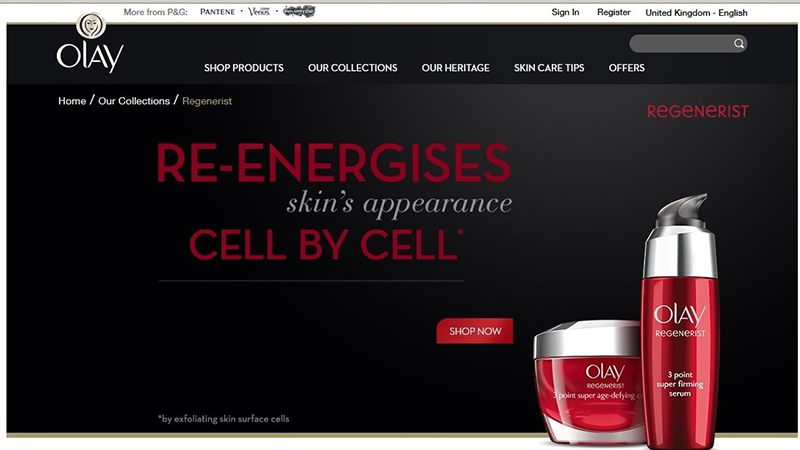
An advert for this product was banned by the UK Advertising Standards Authority in 2012 because Olay's claims for the product had not been substantiated and was misleading
Olay Regenerist. Owner: Procter & Gamble
- Aqua, water;
- Dimethicone, emollient. Moisturisers work by forming an oily layer on the top of the skin that traps water in the skin. Petrolatum, lanolin, mineral oil and dimethicone are common emollients;
- Glycerin, humectant used as a moisturiser;
- Niacinamide, a form of vitamin B3;
- Dimethicone Crosspolymer, a type of silicone;
- Polymethylsilsesquioxane (a silicone ingredient used in many skin care, hair care, and cosmetic formulas, most often as a film former);
- Acrylamide/Sodium Acryloyldimethyltaurate Copolymer (a kind of polymer (big molecule from repeated subunits) that helps to thicken up and stabilize products.);
- Panthenol, Alcohol form of the B vitamin pantothenic acid. Panthenol is used in skincare products as a humectant (ability to attract and hold moisture);
- Polyethylene, a synthetic thermoplastic polymer;
- C13-14 Isoparaffin, texture enhancer;
- Tocopheryl Acetate, a specific form of vitamin E known for its antioxident properties;
- Allantoin, moisturizing ingredient;
- Dimethiconol, silicone based emollient, a film-former, an antistatic agent and an anti-foaming agent;
- Butylene Glycol, butylene glycol is a type of alcohol. It’s often made from distilled corn;
- Camellia Sinensis Leaf Extract, Green Tea - claimed to be antioxidant, UV protectant, anti-inflammatory;
- Palmitoyl Pentapeptide-4, peptide consisting of five amino acids (the building blocks of all proteins) used to allow cell penetration to palmitic acid;
- Titanium Dioxide, Inert earth mineral used as a thickening, whitening, lubricating, and sunscreen ingredient in cosmetics;
- Laureth-7, used as an emulsifier and surfactant (materials that lower the surface tension between two liquids or between a liquid and a solid);
- Laureth-4, derived from lauryl alcohol and used either as a cleansing agent or texture enhancer;
- Acrylates/C10-30 Alkyl Acrylate Crosspolymer, viscosity controlling, emulsion stabilising;
- Triethanolamine, to help balance pH levels, as well as to act as a cleansing base. When absorbed into the body over a long period of time, it can become toxic. Even short periods of exposure can cause allergic reactions, including eye problems and dry hair and skin;
- Sodium PEG-7 Olive Oil Carboxylate, Sodium PEG-7 Olive Oil Carboxylate is a reaction product of olive oil peg-7 esters and sodium monochloroacetate (used as a herbicide);
- Disodium EDTA, disrupts the surface of skin cells so that other chemicals can get in more easily;
- PEG-100 Stearate, allow oil and water to mix;
- Ammonium Polyacrylate, emulsion stabilizer, film former, film forming, stabilising, and surfactant;
- DMDM Hydantoin, used as a preservative;
- Benzyl Alcohol, Preservative. Organic alcohol that occurs naturally in some fruits;
- Iodopropynyl Butylcarbamate, water soluble preservative that contains Iodine, claimed to be safe when used at concentrations less than 0.1%, its widespread use in cosmetic products has led to an increased number of cases of contact allergy;
- Methylparaben, anti-fungal agent;
- Propylparaben, used as an antifungal agent and an antimicrobial agent;
- Parfum, fragrance;
- Caramel, melted sugar;
- CI 19140 (Tartrazine), common synthetic yellow colorant;
- CI 16035 (Azura Red), colorant.
The list of ingredients is composed with a majority of synthesised chemicals and chemical compounds all of which have been deemed as safe to use by various agencies.
Natural, organic, green, etc.
Why should we be skeptical about the use of words such as 'organic', 'natural', 'chemical-free', et. al.?
Well, take the word 'natural' for example, this claim can mean anything because there is no specific definition for ‘natural’. Some companies argue that if an ingredient comes from a natural source then it’s natural. They conveniently overlook the fact that they chemically modify it to make it work the way they want it to.
The use of the word 'organic' is not much better. True, there is a USDA organic certification program but it is not a requirement that a cosmetic company follow it to use the 'organic' claim on their products. In the UK there are strict guidelines on what is considered to be organic and how and when a product can be labelled and sold as organic.
Why it is misleading – Companies who use this claim want consumers to believe that the products they produce are “safer” than other cosmetics. Natural / organic / green cosmetic are not always proven to be 'safer' although evidence points to the fact that may be less harmful.
It's all OK ... this product is chemical free!
Using the words 'chemical free' in a product is astoundingly wrong in every sense.
Why?
Because every cosmetic or personal care product you can buy is made of chemicals. There is no such thing as a 'chemical free' cosmetic, or anything else for that matter.
Water is a chemical. Titanium Dioxide is a chemical. Likewise, DDT - a pesticide, and Agent Orange - a herbicide (both now banned from manufacture) - were deadly harmful man-made chemical compounds.
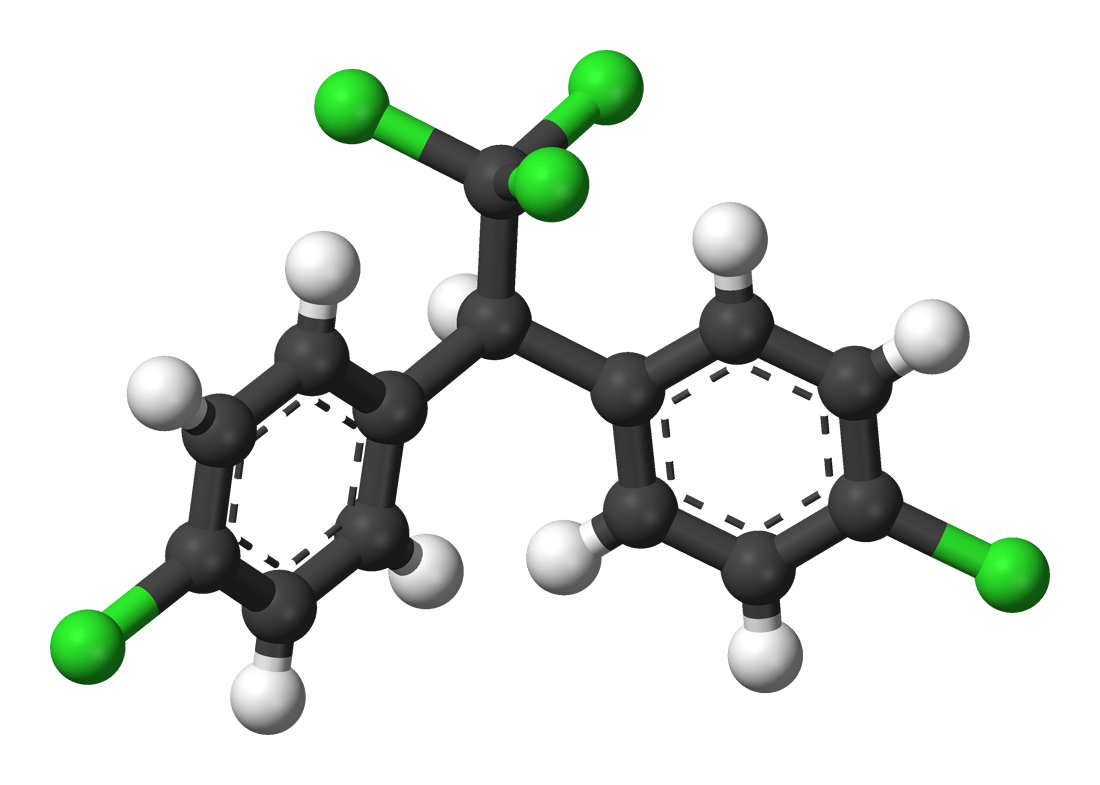
Chemical structure of dichlorodiphenyltrichloroethane (DDT)
Why 'chemical free' is misleading – Well, it’s just not true and is just wrong.
The term is used by manufacturers to imply that the product is "safer" than products made with synthesised chemicals. The products are often not proven to be 'safer', only less harmful.
100% natural ...
Here is another product's ingredient list with explanations of what (but not how) they claim to provide for the user:
With 100% natural plant and mineral derived actives, REN CLEAN SKINCARE’s Bio Retinoid Anti-Ageing Cream delivers potent, skin saving ingredients to reinvigorate sluggish cells and boost the luminosity of your complexion. With Retinoid Analogue (to boost collagen and in turn, reduce the depth of fine lines and wrinkles); Galactan (from Red Algae, to repair cell damage, protect DNA and help prevent premature ageing); Oleuropein (an anti-oxidant that detoxifies and promotes radiance); Phycocolloids (to instantly lift and tighten skin) and Hyaluronic Acid (to retain moisture and keep skin plump and dewy), this addresses all the primary signs of skin ageing in one simple step.
Ingredients list for the above product:
- Rosa Damascena Flower Water, made from the petals of the Damask rose, has anti-oxidant and anti-inflamatory proerties,
- Rosa Rubiginosa Seed Oil, used for its Vitamin A and Vitamin C content, as well as its antioxidant, diuretic (which reduces puffiness) and astringent properties,
- Cetearyl Alcohol, an emulsifier that thickens cosmetics products and makes them stable by holding water and oil together,
- Glycerin, a natural compound derived from vegetable oils or animal fats,
- Caprylic / Capric Triglyceride, creates a barrier on the skin's surface, which helps to reduce skin dryness by decreasing the loss of moisture,
- Oryza Sativa (Rice) Germ Oil, skin-conditioning agent,
- Oleyl Alcohol, used as a nonionic surfactant, emulsifier, emollient and thickener in skin creams, lotions and many other cosmetic products,
- Myristyl Myristate, formed by the combination of myristyl alcohol and myristic acid ingredients found in Nutmeg, palm oil and coconut oil,
- Cetearyl Glucoside, a natural, vegetable based, emulsifier derived from plant sugars and fatty acids,
- Gossypium Harbaceum (Cotton) Seed Oil,
- Dipalmitoyl Hydroxyproline, Finding it in plant sources is hard, often not yielding adequate amounts, but of the highest content includes Alfalfa Sprouts
- Triheptanoin, a naturally-occurring fat that is readily synthesized from castor bean oil,
- Lauryl Laurate, plant based, emollient (mono-ester), slip agent, and skin-penetrating agent,
- Phenoxyethanol, found naturally in green tea, but the commercial ingredient is synthetically produced in a laboratory creating what's termed a "nature identical" chemical,
- Hydroxypropyl Methylcellulose (HPMC), produced from cellulose, a natural polymer and fiber. HPMC undergoes a rigorous manufacturing process involving the synthetic — and not natural — alteration of cellulose,
- Bidens Pilosa Extract, used as a medicinal plant in many regions of Africa, Asia and tropical America. Roots, leaves and seed have been reported to possess anti-bacterial, anti-dysenteric, anti-inflammatory, anti-microbial, anti-malarial, diuretic, hepato-protective (ability to prevent damage to the liver) and hypotensive activities
- Bakuchiol, a compound that naturally occurs in the seeds and leaves of the plant psoralea corylifolia (commonly known as babchi) in the Indian subcontinent
- Oryzanol, an antioxidant found in rice bran oil,
- Linum Usitatissimum (Linseed) Seed Oil, fragrance ingredient, skin-conditioning agent,
- Pullulan, exhibits oxygen barrier property, moisture retention, and fungal growth prevention,
- Kappaphycus Alvarezii Extract, an obtained from red algae that's rich in milk sugar polysaccharide called galactan,
- Levan, a naturally occurring fructan (a type of carbohydrate composed of chains of fructose, the simple sugar found in honey and fruit) present in many plants and microorganism species,
- Olea Europaea (Olive) Leaf Extract, oleuropein, the main component in olive leaf extract, has antioxidant, antibacterial, antimicrobial, anti-inflammatory, and immune-stimulating properties,
- Tocopherol, vitamin E,
- Sodium Hyaluronate, a water-soluble form of Hyaluronic Acid,
- Xanthan Gum, used for product texture and formulation and is thought to have some hydrating benefits for the skin
- Ethylhexylglycerin, an emollient and humectant boosting the anti-microbial performance of other ingredients to protect products from spoilage
- Parfum (Fragrance),
- Decyl Glucoside, natural, non-ionic surfactant and emulsifier
- Porphyridium Cruentum Extract, an extract of the alga, porphyridium cruentum
- Sodium Hydroxide, also known as lye and caustic soda, sodium hydroxide is a highly alkaline ingredient used in small amounts in cosmetics to establish and hold the pH of a product,
- Zizyphus Jujuba Fruit Extract,
- Helianthus Annuus (Sunflower) Seed Oil, a non-volatile, non-fragrant plant oil used as an emollient in cosmetics,
- Linalool, a naturally occuring fragrance chemical, frequently used in scented products because of its fresh, flowery odor,
- Phenethyl Alcohol, a preservative and fragrance ingredient,
- Beta-Carotene, an organic, strongly colored red-orange pigment abundant in fungi, plants, and fruits,
- Daucus Carota Sativa (Carrot) Root Extract, it can have antioxidant properties, but applied topically (application to body surfaces) it can cause sensitivity,
- Daucus Carota Sativa (Carrot) Seed Oil, carrot seed oil has antimicrobial, antioxidant, and anti-inflammatory properties,
- Ascorbyl Palmitate, derived from corn dextrose fermentation and palm oil.
Looking at the list of ingredients for the above product, one is particularly intriguing, Zizyphus Jujuba commonly called Chinese date. Researching this show the following:
Traditionally, one of the main functions of jujube, as described in herbal medicine, is to benefit our brain by calming down the mind and improving quality of sleep. Here, the activities of jujubes on nervous system are summarized and discussed. Jujube possesses neuroprotective activities, including protecting neuronal cells against neurotoxin stress, stimulating neuronal differentiation, increasing expression of neurotrophic factors, and promoting memory and learning. Flavonoid, cAMP, and jujuboside could be the potential bioactive ingredients to account for the aforesaid biological activities. These findings imply that jujube is a potential candidate for development of health supplements for prevention and/or treatment of neurological diseases.
Well, it seems that there isn't too much to worry those concerned with facial beauty in this product, what with all those 'natural' chemicals. So, slap this on your face and calm your neurological stress levels ... maybe it will take your mind off the price ... in (Sept. 2020) about $4,486 per U.S. gallon, or about $1,185 per litre!
The media and their part in Bad Science
If there is one thing the media can accused of, and here it means about the Press, Television and Social Media, is 'sensationalism'. To put it bluntly, nothing excites the public imagination more than an attention grabbing headline.
Bad science has a devastating effect on scientific communities and, if it is reported in the media, it can have a devastating effect on the whole of society
PMC article. doi: 10.1038/sj.embor.7400862
Take for example:
Autism link to MMR vaccine
The research findings of Dr. Andrew Wakefield in the UK had a profound effect on the immunisation of children against three highly infectious and potentially life threatening diseases, Measles, Mumps and Rubella.
The problem with this was that although many other studies debunked the findings of Dr. Wakefield, much of the popular press continued to back him for several years. This overt backing played on the fears of many parents about the risks of immunisation to their children who refuesd to allow their children to be given the widely availbel MMR vaccine. This in turn eventually saw the rate of immunisation fall dramatically and the subsequent rise of the dieseases together with their health consequences.
Because people in the non-scientific world generally don't read science journals they rely on the media and the press for information. Here there is a problem in itself. Many journalists and science writers get their information from press releases of respected Journals such as 'The Lancet'.
These respected Journals have strict rules on publication of research findings, but there are others that operate on a less strict 'pay and publish principles'.
The media, in their haste to always get the latest and greatest scoop, fall fevourishly onto anything that is likely to capture the attention, imagination and voracity of the news hungry population in order to increase their revenue streams.
UGH comment:
The overall aim for us all should be to "keep an open mind" when it comes to science. We should stive to be receptive to new ideas and innovation. At the same time we must always be wary of being duped by incorrect, misleading, untruthful and covertly biased information.
Science, in the non-scientific population, has its supporters and its detractors. Science has been hailed variously as the saviour of humanity and alternatively the ultimate cause for the downfall of mankind.
So, what can we ordinary folk do to make sure that we have only the correct information?
In a 2015 National Geographic article [7], the author, Joel Achenbach states "We live in an age when all manner of scientific knowledge—from the safety of fluoride and vaccines to the reality of climate change—faces organized and often furious opposition. Empowered by their own sources of information and their own interpretations of research, doubters have declared war on the consensus of experts."
What does this tell us?
Well it tells us that even when good science truly gives us something beneficial, when it expands our knowledge, when it helps us to live our lives better than our forebears, there are those who either wish to use it to make fame and profit for themselves, or who outright deny the science facts ... the internet and social media is crammed full of opposing views on any subject that you can care to name.
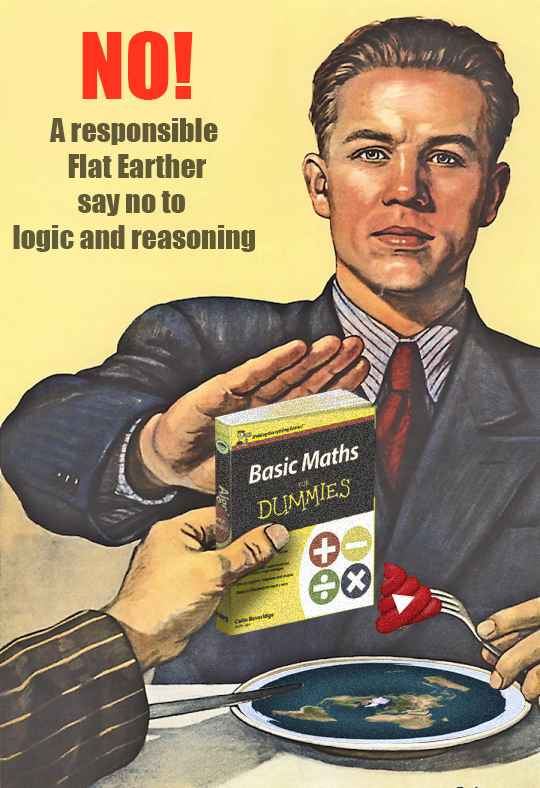
There are those who shout 'conspiracy' when presented with science fact, along with those who flatly deny that anything scientific is truthful. There are those who will use misinformation, lies and decit to fool, trick and con to get what they want.
So dear readers, don't be taken in by the fools, fraudsters, criminals and zealots ... be skeptical, be inquisitive, don't take anything at face value. Use your knowledge of Buddhi to guide you.
Is she real or is she fake?
Erica, The latest creation of Osaka University's Professor Hiroshi Ishiguro, an android that's designed to work, one day, as a receptionist or personal assistant. See more here.
References
[1]. Vincent, M.J., Bergeron, E., Benjannet, S., Erickson, B.R., Rollin, P.E., Ksiazek, T.G., Seidah, N.G. and Nichol, S.T., 2005. Chloroquine is a potent inhibitor of SARS coronavirus infection and spread. Virology journal, 2(1), p.69.
[2]. British Heart Foundation: Why hydroxychloroquine isn't a "miracle cure" for coronavirus
[3]. NHS UK: Homeopathy
[4]. The Spectator, UK, article: The debate about homeopathy is over. These verdicts prove it.
[5]. Bad Science, Ben Goldacre, 2008. Published by HarperCollins UK. ISBN: 9780007283194
[6]. Sciencemag.org: What massive database retracted papers reveals about science publishing's death penalty, 2018
[7]. National Geographic: Why Do Many Reasonable People Doubt Science?
PNAS (National Academy of Sciences of the United States of America): Science audiences, misinformation, and fake news
NCBI: Bad science in the headlines. Who takes responsibility when science is distorted in the mass media?
Walter Scheirer (2020) A pandemic of bad science, Bulletin of the Atomic Scientists, 76:4, 175-184, DOI: 10.1080/00963402.2020.1778361
fredhutch.org: Spinning science: Overhyped headlines, snarled statistics lead readers astray
psmag.com: How Cosmetic Companies Get Away With Pseudoscience
chemistscorner.com: The 10 Most Misleading Cosmetic Claims
Wikipedia: Salt
PMC: Article PMC1794697
whatstheharm.net: Alternative Medicine
CHE: The truth about Homeopathy
